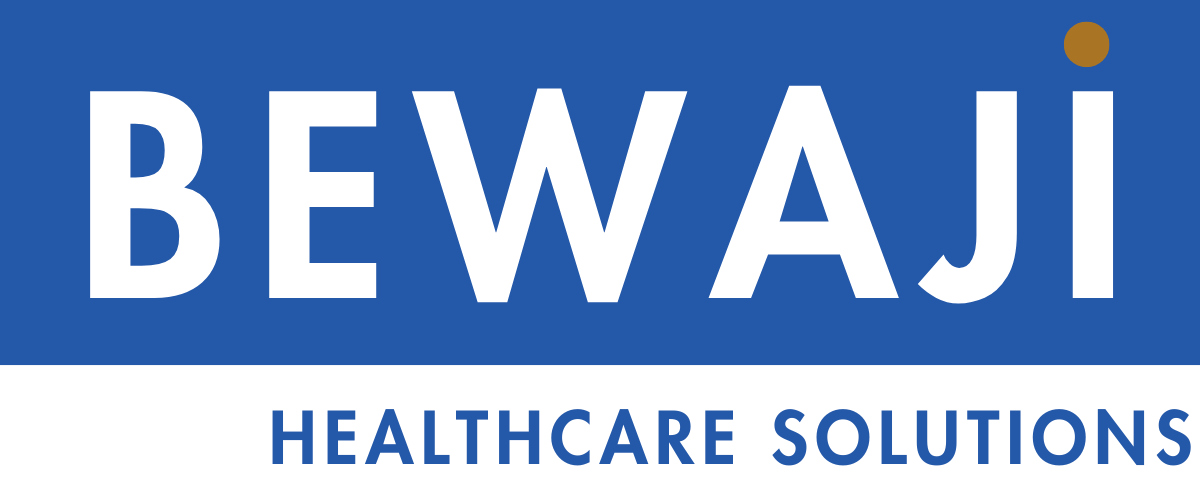Patient retention and engagement are critical challenges, with significant implications for both patient outcomes and the financial stability of healthcare providers. In this piece, I will explore why patients leave their current providers and how leveraging patient data to create personalized engagement strategies can retain existing patients and attract new ones by enhancing the quality of care, improving patient experiences, and fostering trust-based relationships. By addressing why patients might leave and how to counteract these tendencies through data-driven personalization, healthcare providers can transform their patient engagement approaches and outperform competitors.
Understanding Why Patients Leave
Quality of Care and Patient Experience
One of the primary reasons patients switch healthcare providers is the perceived quality of care. Patients often believe that they will receive better care elsewhere based on clinical outcomes, the competence of healthcare providers, and overall patient safety. For instance, a patient who hears about better surgical outcomes at a different hospital might consider switching even if their current provider has not had any adverse incidents.
Negative patient experiences also significantly impact patient retention. Long wait times, inadequate communication, and a lack of empathy from healthcare staff can drive patients away. For example, a patient who waits hours for a scheduled appointment or who feels dismissed by their physician is more likely to seek care elsewhere. Addressing these issues through continuous training programs for healthcare providers and implementing patient feedback systems can mitigate these risks.
Accessibility and Convenience
Accessibility and convenience are also crucial factors in patient retention. Patients prefer healthcare facilities that are conveniently located and offer flexible hours. A healthcare provider that extends operating hours offers weekend and evening appointments, or sets up satellite clinics in underserved areas can significantly improve accessibility.
Appointment availability is another key factor. Difficulty scheduling timely appointments can lead patients to seek more accessible alternatives. Optimizing scheduling systems to reduce appointment wait times, using telemedicine to offer virtual consultations, and implementing online scheduling tools can enhance accessibility and patient satisfaction.
Technological Advancements
In today’s digital age, technological advancements are pivotal in patient retention. Patients increasingly value the convenience of digital services such as telemedicine, patient portals, and mobile health apps. A healthcare provider that invests in telehealth infrastructure develops user-friendly patient portals and mobile apps and ensures seamless integration of digital services with traditional care can attract and retain tech-savvy patients.
Efficient Electronic Health Records (EHR) systems are also significant. EHR systems that facilitate better communication and continuity of care can improve patient retention. Implementing or upgrading to interoperable EHR systems that allow easy access to patient records and improve data sharing among healthcare providers can enhance patient care coordination and satisfaction.
Cost and Insurance Coverage
High out-of-pocket costs and lack of price transparency can push patients to seek more affordable options. Patients are more likely to switch providers if they find a competitor who offers lower costs. Providing transparent billing practices and offering financial assistance programs, flexible payment plans, and counseling services to help patients understand their insurance benefits and explore cost-saving options can address these concerns.
Insurance acceptance also plays a crucial role. Patients may switch providers if a competitor accepts a patient’s insurance and offers lower co-pays or better coverage for services. Healthcare providers must work closely with insurance companies to ensure broad coverage and competitive service pricing.
Reputation and Word of Mouth
The reputation of a healthcare provider significantly influences patient retention. A competitor with a better reputation for quality care or specialized services can attract patients. Positive reviews and recommendations from other patients play a significant role in influencing decisions. Building a solid reputation through community engagement, transparent practices, and actively managing and improving online reviews can enhance patient retention.
Specialization and Range of Services
Patients often switch to providers who offer specialized treatments or services unavailable at their current provider. Competitors providing a broader range of services, including integrated care, can be more appealing. Developing specialized service lines and multidisciplinary care teams that provide comprehensive care for complex conditions can attract and retain patients.
Cultural Competence
Cultural sensitivity and competence are critical in healthcare. Providers who better understand and respect patients’ cultural, linguistic, and personal preferences are more likely to retain them. A diverse healthcare team that reflects the patient population can improve trust and satisfaction. Implementing ongoing cultural competence training for all staff and developing language access services can enhance patient retention.
Leveraging Patient Data for Retention and Engagement
Personalized Care and Communication
Using Electronic Health Records (EHRs) and patient data to create detailed patient profiles can significantly enhance patient retention and engagement. These profiles should include medical history, preferences, and social determinants of health. Tailoring communication strategies to individual patient needs, such as sending appointment reminders, follow-ups, and preventive care, can improve patient engagement.
For example, a healthcare provider can use EHR data to identify patients who have missed annual check-ups and send personalized reminders encouraging them to schedule an appointment. This proactive approach can increase patient adherence to recommended care plans and improve health outcomes.
Predictive Analytics for Proactive Engagement
Predictive analytics can be a powerful tool in identifying patients at risk of non-compliance, chronic disease progression, or requiring additional support. Using data to stratify risk, healthcare providers can implement targeted outreach programs to engage at-risk patients with personalized interventions and support.
For instance, predictive models can identify diabetic patients at risk of complications and enable healthcare providers to offer tailored interventions such as dietary counseling, medication adjustments, and regular monitoring. This proactive engagement can prevent complications, improve patient health, and enhance satisfaction.
Enhancing Patient Experience
Implementing robust patient feedback systems to gather insights on patient experiences can help identify areas for improvement. Using data to map the patient journey and identify touchpoints where interventions can improve satisfaction and retention is also essential.
For example, analyzing patient feedback may reveal that long wait times in the emergency department are a common complaint. By addressing this issue through process improvements and better resource allocation, healthcare providers can enhance the patient experience and reduce the likelihood of patients seeking care elsewhere.
Integrated Care Coordination
Utilizing integrated care management tools that allow seamless coordination between various healthcare providers ensures continuity and comprehensive care. Effective communication across healthcare providers using data-sharing platforms ensures patients receive consistent and coordinated care.
For instance, an integrated care coordination system can enable a primary care physician, specialist, and pharmacist to collaborate on a patient’s treatment plan, ensuring that all aspects of the patient’s care are addressed and monitored.
Value-Based Care Initiatives
Value-based care initiatives measure patient outcomes and adjust care plans to improve health results. Developing individualized care plans reflecting patients’ health goals and preferences can enhance their engagement and satisfaction.
For example, a value-based care program might use patient data to identify high-risk patients and develop personalized care plans, including regular check-ups, lifestyle modifications, and support services. This approach aligns with value-based care principles and improves patient outcomes.
Digital Engagement Platforms
Implementing or enhancing patient portals that provide easy access to health information, appointment scheduling, and communication with healthcare providers can improve patient engagement. It is also beneficial to develop mobile health apps that offer personalized health tips, medication reminders, and other tools to engage patients actively in their care.
For instance, a patient portal can allow patients to view their lab results, schedule appointments, and communicate with their healthcare team, improving transparency and accessibility.
Health Education and Empowerment
Providing patients with tailored health education materials based on their specific conditions, treatments, and goals can empower them to take control of their health. Empowerment programs that use data to identify patients who may benefit from self-management programs can enhance patient engagement.
For example, a healthcare provider can develop educational content for patients with hypertension, including lifestyle tips, dietary recommendations, and stress management techniques, to help them manage their condition effectively.
Loyalty and Incentive Programs
Developing patient loyalty programs that reward patients for regular check-ups, treatment plan adherence, and wellness program participation can improve retention. Offering incentives for patients who actively engage in their healthcare, such as discounts on services or health-related rewards, can also enhance engagement.
For instance, a loyalty program might offer patients points for attending preventive care appointments, which can be redeemed for discounts on future services or health products.
Implementing Data-Driven Strategies
Data Integration and Analysis
Integrating data from various sources, such as EHRs, patient surveys, and wearable devices, creates a comprehensive view of each patient. Using advanced analytics tools to analyze patient data, identify trends, and develop insights can inform personalized engagement strategies.
For example, a healthcare provider can integrate wearable device data that monitors patient activity levels with EHR data to provide personalized exercise recommendations and track progress over time.
Ethical and Secure Data Practices
Ensuring compliance with data privacy regulations and maintaining high data security standards is essential to building and maintaining patient trust. Transparent practices that communicate how patient data is used and the benefits patients receive from data-driven care are crucial.
For instance, healthcare providers should inform patients how their data is used to improve care and ensure that all data handling practices comply with regulations such as the Health Insurance Portability and Accountability Act (HIPAA).
Continuous Improvement and Adaptation
It is essential to regularly monitor and evaluate the effectiveness of engagement strategies using patient data and feedback. Adapting strategies based on new insights, patient needs, and emerging trends in healthcare ensures continuous improvement.
For example, a healthcare provider can use patient feedback to identify areas where engagement strategies are ineffective and adjust their approach accordingly, such as by introducing new communication channels or refining existing ones.
By effectively leveraging patient data to create personalized and impactful engagement strategies, healthcare providers can enhance patient retention and foster stronger, trust-based relationships. This approach improves patient loyalty and contributes to better health outcomes and overall satisfaction. Healthcare providers must embrace these strategies to stay competitive in an increasingly data-driven healthcare landscape.


